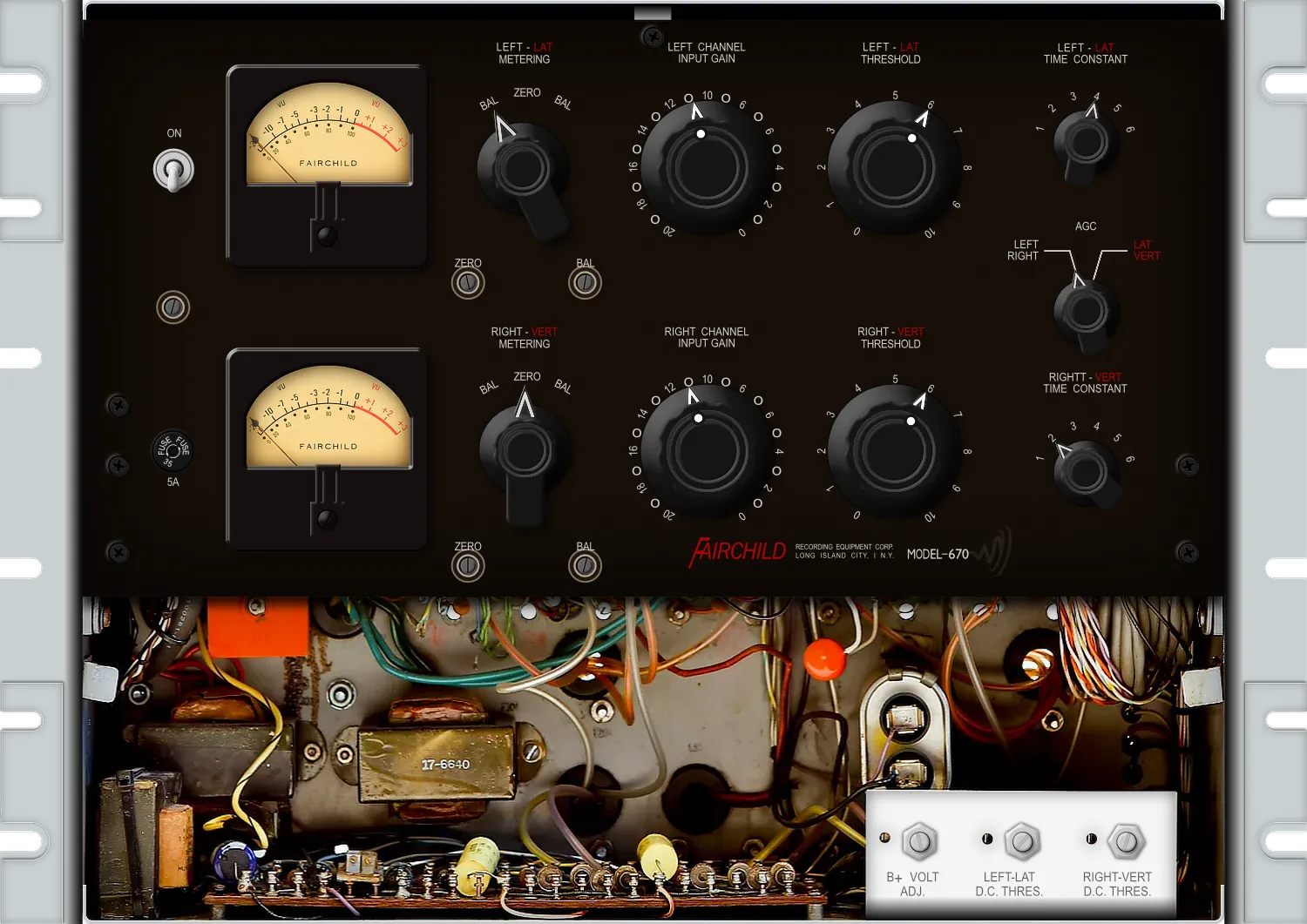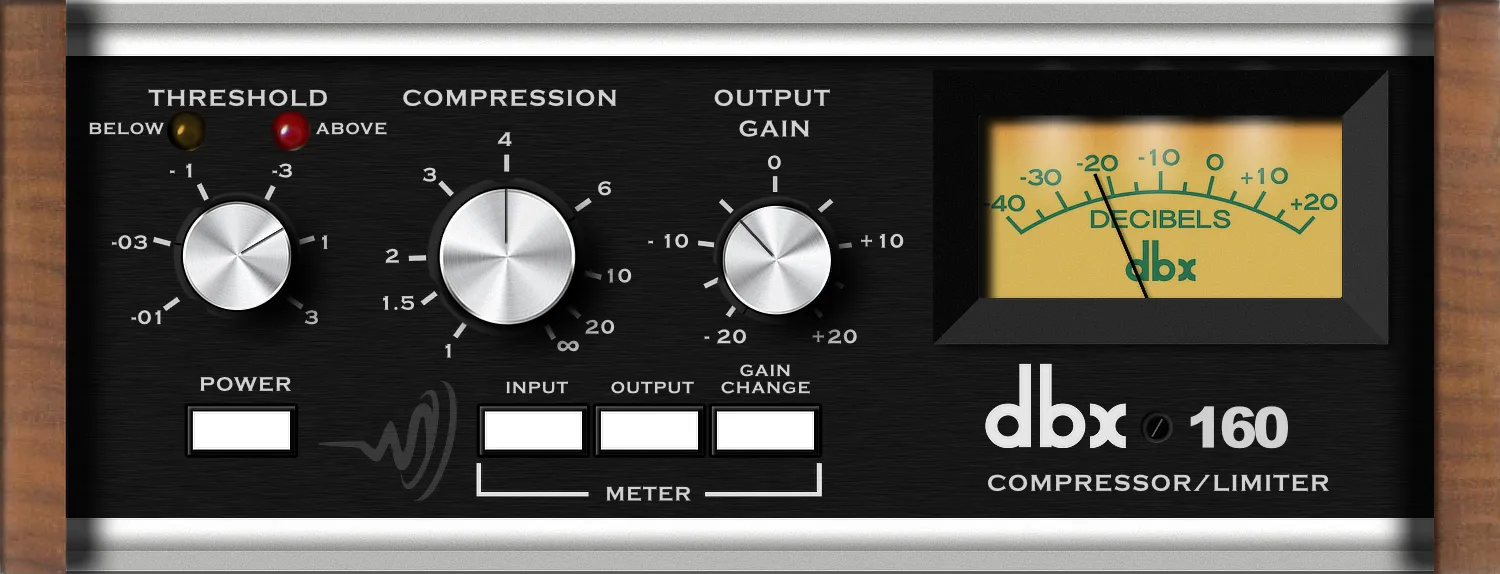Vintage Digital
The History of Compressor/Limiters
Classic Recording Studio Equipment
Compressor/limiters are devices that reduce the dynamic range of an audio signal, which is the difference between the loudest and quietest parts of the sound. Dynamic range compression can make the audio sound louder, more consistent, and more punchy, as well as prevent distortion and clipping.
The origins of compressor/limiters can be traced back to the broadcast industry, where they were used to prevent over-modulation of radio signals. Over-modulation occurs when the audio signal exceeds a certain level and causes the radio wave to distort and lose information. Compressor/limiters were designed to automatically lower the volume of loud sounds above a threshold, while leaving the quiet sounds unaffected. This way, the audio signal could be transmitted without distortion and with a higher average level.
Fairchild 670 Tube Limiter
One of the earliest examples of a compressor/limiter was the Western Electric 110A, which was developed in 1931 for telephone lines. It used a variable resistor controlled by an electro-mechanical device that measured the signal level. The Western Electric 110A was later adapted for radio broadcasting and recording studios.
Another early compressor/limiter was the RCA BA-6A, which was introduced in 1947. It used a variable-mu tube circuit that changed its gain depending on the input signal level. The RCA BA-6A had a fast attack time and a smooth release time, making it suitable for voice and music applications. It was widely used by radio stations and record labels such as Capitol Records and Motown.
In the 1950s and 1960s, compressor/limiters became more sophisticated and versatile, with features such as variable attack and release times, ratio, threshold, and makeup gain. Some of the most famous models from this era include:
The Fairchild 660 and Fairchild 670, which were introduced in 1959 and 1960 respectively. They were tube-based compressor/limiters that used a photoresistor and a light source to control the gain reduction. They had a very smooth and musical sound, and were favored by engineers such as George Martin, Phil Ramone, and Geoff Emerick. They were used on many classic recordings by artists such as The Beatles, Frank Sinatra, Ray Charles, and Pink Floyd.
Urei 1176 Limiting amplifier
The Urei 1176, which was introduced in 1967, was a solid-state compressor/limiter that used a field-effect transistor (FET) to control the gain reduction. It had a very fast attack time and a distinctive sound that added punch and presence to the audio. It was widely used on vocals, drums, guitars, and bass. It was used by engineers such as Bruce Swedien, Eddie Kramer, and Bob Clearmountain. It was used on many hit records by artists such as Led Zeppelin, Michael Jackson, Stevie Wonder, and AC/DC.
The Urei 1176 was used on these classic recordings
Teletronix LA-2A Levelling Amplifier
The Teletronix LA-2A, which was introduced in 1965. It was a tube-based compressor/limiter that used an electro-optical cell to control the gain reduction. It had a very slow attack time and a natural release time, making it suitable for smoothing out dynamics and adding warmth to the audio. It was widely used on vocals, bass, guitars, and horns. It was used by engineers such as Bill Putnam, Tom Dowd, and Al Schmitt. It was used on many classic recordings by artists such as The Rolling Stones, Aretha Franklin, The Beach Boys, and Marvin Gaye.
The Teletronix LA-2A was used on these classic recordings
dbx 160 Compressor/Limiter
In the 1970s and 1980s, compressor/limiters became more digital and programmable, with features such as side-chain inputs, filters, gates, expanders, de-essers, multiband compression, peak limiting, soft clipping, look-ahead detection, and automatic gain control. Some of the most famous models from this era include:
The dbx 160 series, which were introduced in 1971. They were solid-state compressor/limiters that used a voltage-controlled amplifier (VCA) to control the gain reduction. They had a very hard-knee characteristic and a linear detection circuit that made them very effective at controlling transients and peaks. They were widely used on drums, bass, guitars, keyboards, and vocals. They were used by engineers such as Bob Ludwig, Bob Clearmountain, and Roger Nichols. They were used on many hit records by artists such as The Police, Madonna, Prince, and Dire Straits.
“The DBX 160 VU Compressor/Limiter is a classic for a reason. It’s been a stalwart in my studio for decades. The compression and limiting it offers is excellent. This workhorse can handle anything you throw at it, from drums to vocals, with finesse. If you’re after a reliable and timeless piece of gear, this is it. A true legend in the world of audio processing.”
The DBX 160 was used on these classic recordings
SSL G Series Bus Compressor
The SSL G Series Bus Compressor, which was introduced in 1981. It was a solid-state compressor/limiter that used a VCA to control the gain reduction. It had a soft-knee characteristic and a non-linear detection circuit that made it very effective at gluing together the mix bus. It had a signature sound that added punch and cohesion to the audio. It was widely used on the master bus of the SSL G Series consoles, which were popular in the 1980s and 1990s. It was used by engineers such as Chris Lord-Alge, Andy Wallace, and Spike Stent. It was used on many hit records by artists such as Queen, U2, Michael Jackson, and Nirvana.
In the 1990s and 2000s, compressor/limiters became more software-based and accessible, with features such as digital signal processing, graphical user interfaces, presets, automation, and plug-in formats. Many of the plugins available emulate these classic hardware compressor/limiters, with some emulations being better than others. Compressor/limiters are still evolving and innovating today, with new models and features being developed and released every year. They are one of the most essential and ubiquitous tools in audio production, with applications ranging from recording to mixing to mastering to live sound. They have shaped the sound of music and audio for decades and will continue to do so for years to come.
























